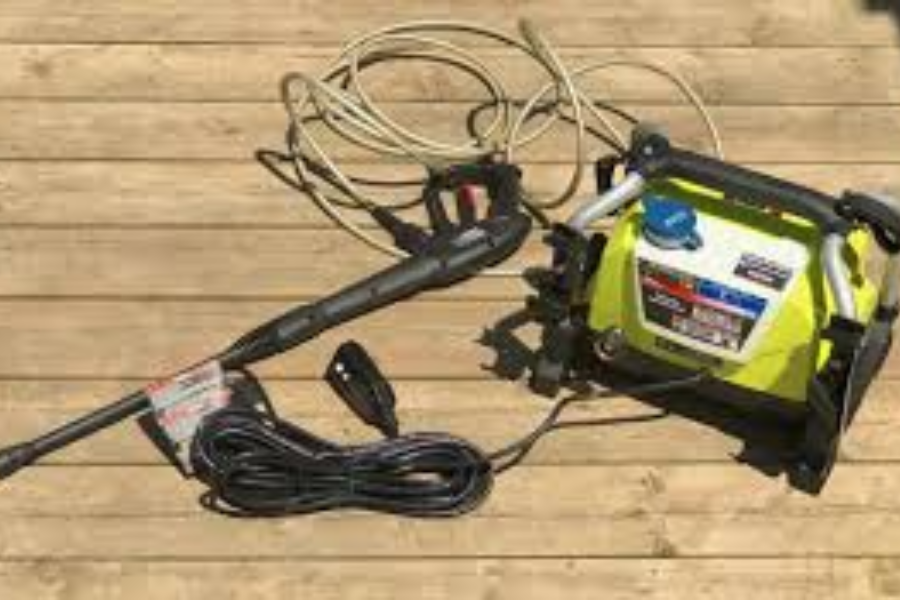Pressure washers are essential tools for homeowners and professionals who want to maintain clean outdoor surfaces efficiently. Among the top brands on the market, Ryobi pressure washers stand out for their durability, innovation, and user-friendly features. Whether you’re a DIY homeowner or a professional cleaner, Ryobi offers models to fit various cleaning needs.
This article provides a detailed, SEO-friendly, and zero-plagiarism guide to Ryobi pressure washers, including types, key features, usage instructions, maintenance tips, and a helpful FAQ section.
What Is a Ryobi Pressure Washer?
A Ryobi pressure washer is a high-powered cleaning machine that uses a motor (electric or gas-powered) to pressurize water for outdoor cleaning tasks. Ryobi, a well-known brand under the Techtronic Industries umbrella, offers a range of pressure washers suitable for light-duty residential cleaning to heavy-duty commercial work.
These machines are effective for:
- Washing driveways, sidewalks, and decks
- Cleaning siding, fences, and outdoor furniture
- Prepping surfaces for painting
- Removing mold, grime, and oil stains
Types of Ryobi Pressure Washers
Ryobi manufactures various pressure washers, mainly categorized into electric and gas-powered models.
1. Electric Ryobi Pressure Washers
Electric models are ideal for residential use. They are quieter, lighter, and easier to maintain.
Popular Electric Models:
- Ryobi 1800 PSI 1.2 GPM Electric Pressure Washer
- Ryobi 2000 PSI 1.2 GPM Electric Pressure Washer
- Ryobi 2300 PSI Brushless Electric Pressure Washer
Pros:
- Lightweight and portable
- Quieter operation
- No fumes
- Lower maintenance
Cons:
- Requires a power outlet
- Less powerful than gas models
2. Gas-Powered Ryobi Pressure Washers
Gas-powered models are more suitable for heavy-duty cleaning, such as large driveways, brick walls, and commercial spaces.
Popular Gas Models:
- Ryobi 2800 PSI 2.3 GPM Honda Engine Gas Pressure Washer
- Ryobi 3300 PSI 2.5 GPM Gas Pressure Washer
Pros:
- Higher pressure and water flow
- Ideal for large-scale jobs
- More portable in outdoor settings
Cons:
- Louder and heavier
- Requires engine maintenance
- Emits fumes
Key Features of Ryobi Pressure Washers
Ryobi pressure washers are known for offering a combination of performance and convenience. Some standout features include:
1. Quick-Connect Nozzles
Most models come with multiple nozzle tips (0°, 15°, 25°, 40°, and soap) that allow for different spray patterns based on the task.
2. Onboard Detergent Tanks
Integrated tanks make it easy to apply cleaning detergent without extra attachments.
3. Turbo Nozzles
Included in select models, turbo nozzles offer up to 50% more cleaning power, helping remove stubborn grime.
4. Brushless Motors (Electric Models)
Brushless motors are quieter and more durable, ideal for long-term residential use.
5. Durable Wheels and Compact Frames
Easy transportation and storage with rugged wheels and a vertical design.
How to Use a Ryobi Pressure Washer Safely
Using a pressure washer correctly ensures safety and extends the life of the machine. Here’s a step-by-step guide:
Step 1: Setup
- Connect the high-pressure hose and spray gun.
- Attach the garden hose to the inlet.
- Plug in or fuel up depending on the model.
Step 2: Choose Nozzle
Select the appropriate nozzle tip for your task. Use 0° for tough stains, 25° for general cleaning, and 40° for delicate surfaces.
Step 3: Start the Unit
- For electric models: Plug into a GFCI outlet and turn the power on.
- For gas models: Pull the starter cord after turning the fuel valve on.
Step 4: Start Cleaning
Begin with a low-pressure spray to test the surface, then adjust accordingly.
Step 5: Shut Down
Turn off the machine, release water pressure, and disconnect all hoses.
Maintenance Tips for Ryobi Pressure Washers
Proper maintenance ensures your Ryobi pressure washer stays in top condition.
Electric Models:
- Store indoors to prevent weather damage.
- Clean the nozzles and hose after each use.
- Check for any electrical cord damage.
Gas Models:
- Change engine oil regularly.
- Flush the pump with clean water.
- Use fuel stabilizer if storing for extended periods.
- Store with an empty fuel tank.
Common Issues and Troubleshooting
Issue: Low Pressure
Solution: Check the nozzle for clogs or clean the water filter.
Issue: Washer won’t start (Electric)
Solution: Check power supply and ensure GFCI outlet is functioning.
Issue: Engine won’t start (Gas)
Solution: Ensure fuel is fresh, spark plug is clean, and the engine switch is on.
Conclusion
Ryobi pressure washers are among the most reliable and efficient cleaning machines on the market, offering models for every level of cleaning—from light-duty home jobs to heavy-duty commercial work. With proper selection, usage, and maintenance, a Ryobi pressure washer can be a long-lasting investment that saves time and delivers outstanding cleaning results.
Whether you’re considering an electric model for patio furniture or a gas unit for tough driveway grime, Ryobi provides performance and value.
FAQs about Ryobi Pressure Washers
Q1: Which Ryobi pressure washer is best for home use?
The Ryobi 2300 PSI brushless electric model is perfect for most residential cleaning tasks.
Q2: Can I use hot water in a Ryobi pressure washer?
No. Ryobi pressure washers are designed for cold water use only unless specifically stated.
Q3: What detergents are safe to use?
Always use pressure washer-approved, biodegradable detergents. Ryobi also sells their own line of compatible cleaning solutions.
Q4: How often should I perform maintenance?
Electric models require minimal upkeep, but it’s good to clean the nozzles after each use. Gas models need oil changes and fuel care every 20-50 hours of use.
Q5: Where can I buy Ryobi pressure washers?
You can purchase them at Home Depot, Amazon, or directly from Ryobi’s official website.



